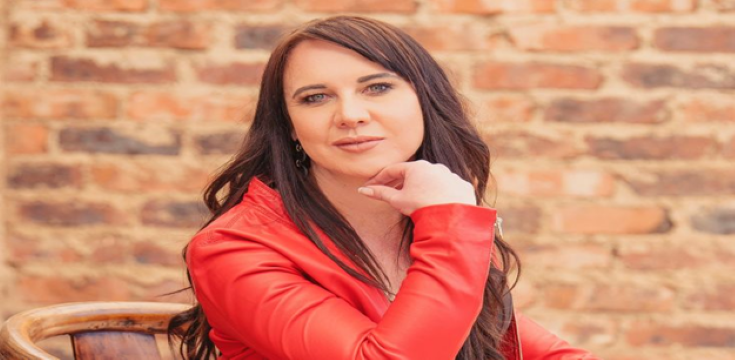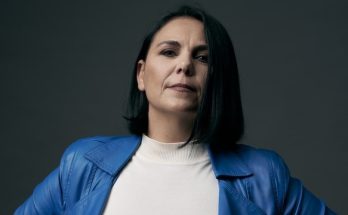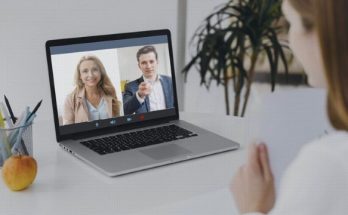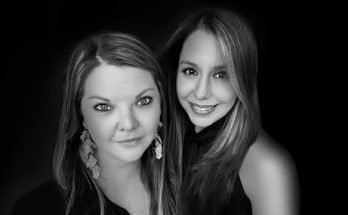1. What does this global recognition mean to you personally and professionally?
Honestly, it feels surreal. The Insights250 isn’t about a title, it’s about being seen for the kind of work that makes you feel alive and that drives change. It’s also about being recognised for work that comes out of Africa, and for showing that researchers on this continent are innovative, creative, and world-class.
For me, it validates the idea that curiosity still matters. Professionally, it’s a nod to the brave, creative work my SoundInsights team does at Kagiso Media Radio. Personally, it’s a quiet reminder that messy, human curiosity can still move an industry- and that we should always question everything.
It’s also a little surreal because people like me -who’ve worked behind the scenes, sacrificed family time, and poured ourselves into supporting others don’t expect moments like this. We’re usually in the roles that go unseen, the ones that make sure the magic happens for everyone else. So this recognition feels deeply personal. It’s proof that quiet work can still make a loud impact.
2. What inspired you to pursue a career in research and insights?
I think research and insights chose me. I studied research psychology, but I was also a musician, so I’ve always lived between emotion and evidence. Research became that middle space -where science meets storytelling, and logic meets feeling.
What drew me in was that research isn’t static. It’s alive; it evolves with people. Over time, it’s moved from counting numbers to understanding contradictions. I’ve learned that insight isn’t about certainty- it’s about empathy and curiosity, and being brave enough to sit with what’s real, even when it’s messy.
3. You’ve been instrumental in pioneering neuro-research in South Africa’s media landscape. What excites you most about these innovations?
Because of my background in psychology, I’ve always been fascinated by how emotion, memory, and attention shape the way people connect with stories. Traditional research can only take us so far- people often tell you what they think they feel, not what they actually feel. Neuro-research closes that gap.
I was really inspired when I looked back at traditional media metrics- how reach and TSL (time spent listening) became standardised in the 1930s and 1940s-and realised that not much had changed since then. This was all done to commercialise radio, and later, other media followed in similar footsteps. We’re still using exposure-based metrics today. That realisation pushed me to explore neuro as a way to evolve how we measure connection, emotion, and impact.
Through SoundInsights, we’ve been building a neuro-layer that blends science and storytelling. These tools help us see what captures attention, what moments trigger joy or tension, and how sound or voice tone drives emotional recall.
In a country as complex and emotionally rich as South Africa, this kind of data is transformative. It helps us understand how audiences across languages and cultures feel media, not just how they remember it. And it ensures brands craft messages that resonate on a human level, not just a media plan. I actually like to call these Human Performance Indices, because most businesses craft KPIs around “what can humans do for me,” rather than asking, “what am I doing for humans?”
4. How can data make storytelling more authentic and inclusive?
When data becomes a mirror, not a weapon. Too often, we use it to prove ourselves right instead of to understand people better. The diversity of your team, especially in how they think, is also incredibly important. You need to be able to learn from each other, challenge assumptions, and hold space for different perspectives.
At the same time, you have to be very aware of your own biases and blind spots. True inclusion in research starts with humility-acknowledging that no single person or dataset tells the full story. When we use data to amplify underrepresented voices and tell stories rooted in emotion and context, that’s when it becomes truly inclusive. Data isn’t just data- it’s the amplification and representation of real humans. That’s a humbling responsibility as a researcher.
5. What challenges have you faced as a woman in the research and media industry, and how did you overcome them?
So many. The biggest one has been people doubting your credibility. There’s a constant dance between being heard and being “likable.” Early in my career, I felt I had to shrink to fit the room.
Now I’m gaining the confidence to build my own rooms and fill them with people who support me and give me honest feedback. The biggest shift came when I stopped asking for permission and started taking risks on myself. Sometimes it’s incredibly difficult, and imposter syndrome is very real.
I’ve also learned that it’s essential for women to amplify other women’s voices. And honestly, you’re never going to get it perfectly “right.” Some days you’ll be told you’re too serious; other days you’re too fun. Either way, just go with the vibe. The moment you stop masking and allow yourself to simply be, people see the genuine you, and that’s where your power really lives.
6. Who are some of the women who have inspired you along your journey, and why?
Firstly, my mother. She instilled unshakeable values and a relentless work ethic in me. I was never allowed to quit without knowing I’d truly tried. She worked incredibly hard throughout my school and varsity years, striving to give me the future she believed I deserved, and she always made sure I had the support I needed.
Even now, she continues to play that role, helping with my children after school so I can keep pursuing my career. Your support system really does become everything.
I’ve also been fortunate to have the guidance of research greats like Louise Polders and Andrea Rademeyer, who saw something in me long before I saw it in myself. And I’m surrounded by the most phenomenal women in media- strong, brilliant, and resilient (you know who you are, because the list would be far too long to name here) -who continue to shape, challenge, and inspire me every single day.
7. What advice would you give to young women aspiring to enter the fields of research, data, or media innovation?
- Be curious, not perfect. The world doesn’t need more polished people- it needs thinkers who can connect dots others can’t see. Ask questions that make people pause.
- Never apologise for having a point of view; your perspective is your power. And sometimes you’ll be asked to water down the truth-don’t. Nobody benefits from half-truths.
- Find the part of research or data that lights you up and make that your superpower.
8. How do you foster creativity and confidence within your team at Kagiso Media Radio?
I try to build psychological safety before strategy. We experiment a lot, fail fast, laugh hard, and celebrate the weird ideas. I remind my team that curiosity isn’t optional, it’s part of who we need to be. Critical thinking plays an important role, too, because creativity means nothing if we can’t question and refine what we create.
And research is creative. It’s the craft of turning chaos into clarity- of connecting dots that others might miss. When people feel safe to be themselves, confidence and creativity follow naturally, as does innovation.
I celebrate failure as much as success, because that’s where the real learning happens. And above all, I encourage authenticity- be your weird, beautiful self. That diversity in thinking is where the magic truly happens.
9. What role do you believe mentorship plays in empowering the next generation of female leaders?
Mentorship turns “I can’t” into “I can, differently.” It’s not about cloning yourself- it’s about creating space for others to rise. It’s also about showing empathy and kindness, especially when someone is learning to find their own voice.
You have to be comfortable with your team outgrowing you- that’s when you know you’ve done your job.
I’ve had mentors who gave me honesty when I wanted comfort. It wasn’t easy, but I grew from every one of those moments.
10. How do you keep the human element at the heart of your work?
So many brands say they’re “human-centric,” but if you scratch beneath the surface, it often just means they’ve added a friendly tone to an email or used diverse stock imagery in a campaign. That’s not being human-centric- that’s aesthetics.
Being truly human-centric means starting with people, not with performance metrics. It means designing experiences, communication, and strategy around real human contexts-the emotions, contradictions, and constraints that shape decision-making every day.
It’s not about personalisation at scale; it’s about understanding at depth. It’s asking: “Did this make someone feel seen, heard, or understood?”- not “Did this increase engagement by 12%?”
Human-centric brands don’t use people as data points; they see data as a way to earn empathy. They don’t speak to audiences; they co-create with them. They treat every interaction from a campaign to a customer service call as an act of respect.
And here’s the hard truth: you can’t claim to be human-centric if the people behind the brand aren’t treated like humans, too. Culture and empathy start inside the organisation before they ever show up in your marketing.
So, to me, being human-centric means remembering that technology, research, and marketing all exist for one reason – to serve the human, not to manipulate them.
11. What future trends in audio research inspire you most?
I’m fascinated by how emotion and sound intersect-how voices, tones, and sonic identity influence memory, trust, and connection. The rise of AI in audio research excites me too, especially when it’s used ethically to measure emotional resonance in real time.
It’s storytelling meets neuroscience, and it’s changing how we understand attention, engagement, and joy. But what really inspires me is how culture, context, and emotion are now colliding with media strategy. We’re moving beyond frequency and reach into a space where we can measure what truly moves people- why something works, not just that it worked.
It’s an incredible time for audio, because it sits at the intersection of feeling and science, and that’s where the future of meaningful media lives.
12. What message would you like to share with women striving to make their mark in male-dominated industries?
- Don’t give up. Honestly, it’s not always easy- but there are incredible men who will mentor you in their space. Learn from them.
- Don’t become smaller to fit in.
- Don’t dilute your intuition to sound more “rational.”
- Lead with both heart and evidence- it’s your unfair advantage.
What else can women do? Support each other loudly. Share knowledge. Recommend one another for opportunities. Give credit in rooms where someone’s voice might be overlooked. And speak up, even when it’s uncomfortable, especially then.
Also, invest in your own development, read widely, understand the business, and learn data and strategy. The more fluent you are in both empathy and evidence, the harder it is for anyone to underestimate you. Become unshakable. Be kind, but fearless.
And if someone tells you it’s impossible, don’t believe them. The future doesn’t belong to those who are the loudest; it belongs to those who are brave enough to stay human.




